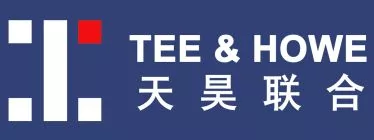These guidelines were announced by the SAMR on 30 June 2023, with a deadline to comment on 29 July 2023 (yes, less than one month, the draft is not long though) at the link below:
https://www.samr.gov.cn/hd/zjdc/art/2023/art_6422b2fb728f486b9814349213ea07c6.html
These guidelines could affect standard setting and negotiation of license of standard essential patents (SEPs). China seemingly is trying to pioneer in the area of anti-monopoly and SEPs. Further, this is the way of China "rule by law" .
Below are some of my observations as a layman:
- There are many high-level principles, which may state the obvious, for example the following (italic words in brackets are my suggestions for the comment):
-
- The stipulations in Article 3 are describing a perfect world, which we (at least I) would love to be in.
- Article 5 stipulates that the patentee should disclose the patents according to the rules set by the standard setting body.
- Replaceability could be the key in determination of the relevant commodity market (Article 4).
- FRAND is the guiding principle of these Guidelines, for example in the following:
-
- Article 6 – licensing commitments, in which unreasonably high license fees, refusal without proper reason, and tying sales of products (why not include licensing of other patents/technologies to parallel the recently announced Provisions Prohibiting Abuse of IP Rights to Exclude and Restrict Competition on 29 June 2023? In particular, Article 14 of the current draft mentioned tying of license) are specifically highlighted (to be bad, of course).
- Article 7 – good faith negotiation, in which the following are specifically recited:
The patentee should provide the following:
- A clear offer from the patentee, including providing a list of standard-essential patents, a comparison table between standard-essential patents and standards, and a reasonable time limit for feedback.
- The calculation method of the license fee rate and rationale, and information the maximum term and status, including assignment status of the SEPs.
The licensee should provide the following:
- No bad faith delay, and refusal to negotiate without proper reason.
- If the licensing offer is not accepted, within reasonable time provides a counteroffer for licensee fee, back license, and so on.
- Articles 13 (which will be discussed below) and 14 (for tying with products and other licenses).
In addition to the FRAND principle, the following caught my eye:
- The following would be considered as monopolistic agreement if included:
-
- Article 8 (when setting standard) – without proper reason, excluding specific operators to participate in standard setting, or exclude their alternative standard proposal (So what about exclusion due to security, particular national security? For example, if some Chinese companies were excluded by a standard setting body due to national security, would this be invoked?)
- Article 9 (when setting up SEP patent pool) – exchanging information on price, productivity, and division of market; and fix or change license fee of SEPs. (I honestly do not know why these would be considered as monopolistic, and will be grateful for education from the experts)
- Article 10 (other agreements) – limit the manufacturing and sales of products with respect to price, quantity and quality; and restrict the operator from developing competing technologies. (While I can understand the other requirements, I do not understand why limiting the quality would be an issue, unless the patentee restricts that the quality of the product could not exceed a certain level. Otherwise, it is common for patentee requiring the licensee to sell products meeting a certain quality standard, at least for product safety reason.)
- Article 11 – SEP patentee would be considered dominating the market, by default, unless replaceability could be shown.
- Article 12 – the following would be considered when evaluating whether the SEPs license fee is unfairly high:
-
- Apparently higher than the development costs. (Wait a second, most of the time the actual development costs are next to nothing than the actual value of a patent, as I have learnt from many litigators discussing evaluation of patent infringement damages, and patent evaluation. If this factor stays on, very few patentee could escape from this, unless the "development costs" cover very broadly, for example include those for pushing the technologies to become a standard)
- Apparently higher than historical or norm licensee fee. (While this may make sense in some cases, we are talking about inventions covered by SEPs after all, which are required by the patent law to have not existed in this world before the respective priority dates)
- Exceeding the territories or scope of the SEPs.
- The SEP's are no longer in force.
- Whether patentee adjusted the license fee according to the change in quantity and quality of the SEPs. (While it is good that quality is mentioned, my guess is this would be evaluated by quantity eventually due to ease. The implication of this is, when the number of SEPs decreases, the license fee should also decrease. The authority may not have thought about continuous addition of SEPs to the standard, particularly when the relevant standard evolves......)
- Article 13 – When refusing to license SEPs, the following are to be considered (as whether good faith is involved):
-
- Whether the infringement damages of the SEPs could be compensated by licensing. (This is interesting, as this may avoid unfairly high license fee provision from being invoked)
- Whether the licensee could pay.
- Force majeure. (Again, would national security be considered as force majeure?)
- Article 15 – Regarding back license/assignment of technologies developed by the licensee, it is interest to see the following, which mean that these should have happened:
-
- The patentee belittling or denying the value of SEPs or other IPs owned by the licensee.
- The patentee prohibiting or restricting the licensee's choice of dispute resolution measures (what about a Chinese company choosing mediation/arbitration in China, but a foreign patentee wishes to choose in a more neutral jurisdiction like Singapore? Forget about Hong Kong)
- Chapter 4 requires that merger could only occur after declaring to the State Council, or the merger is not allowed to occur (See the merger of AMD with Xilinx mentioned in the China anti-monopoly enforcement report 2022).
Yet again, experts in this are please provide your thoughts on the above, and educate a layman including me.
The content of this article is intended to provide a general guide to the subject matter. Specialist advice should be sought about your specific circumstances.

